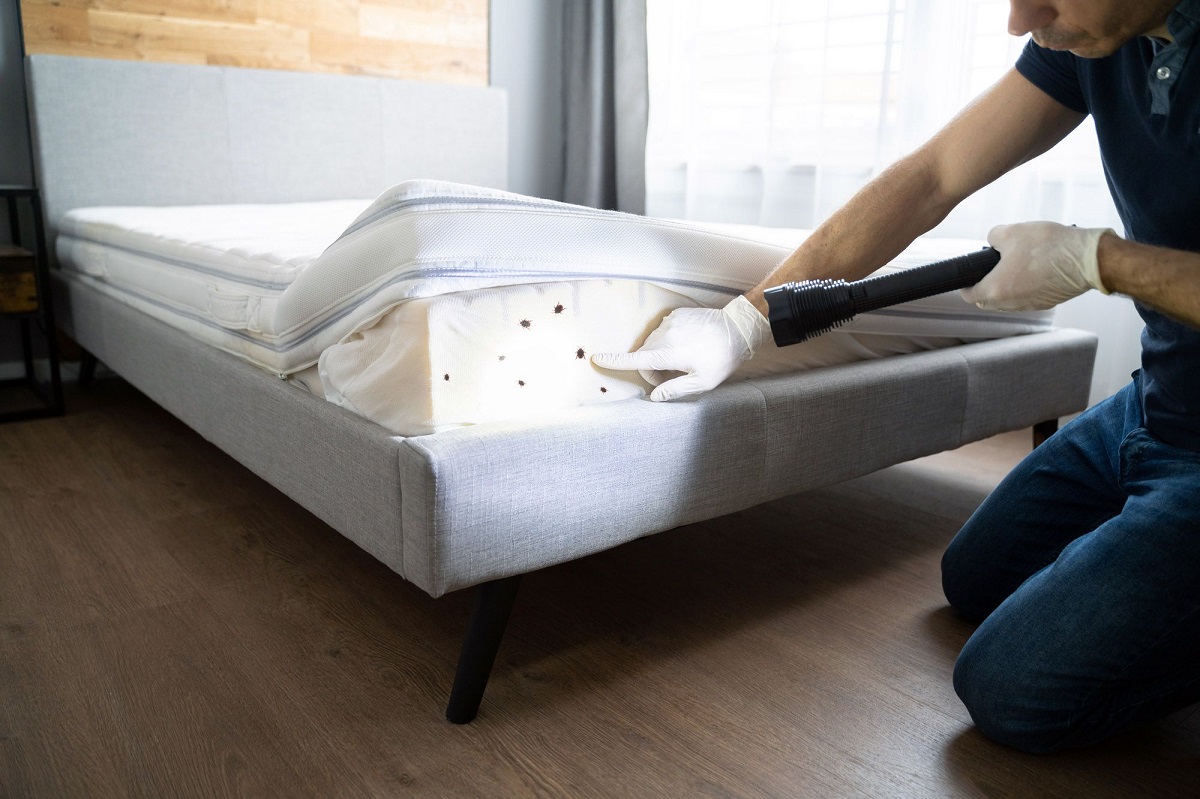

Articles
How To Check Furniture For Bed Bugs
Modified: February 25, 2024
Learn how to check your furniture for bed bugs with our helpful guide. Protect your home and prevent infestations.
(Many of the links in this article redirect to a specific reviewed product. Your purchase of these products through affiliate links helps to generate commission for Storables.com, at no extra cost. Learn more)
Introduction
Welcome to our comprehensive guide on how to check furniture for bed bugs. Bed bugs are small, parasitic insects that feed on human blood and can infest your home, including your furniture. These pests are known for their ability to hide in cracks, crevices, and upholstery, making it crucial to thoroughly inspect your furniture to detect and prevent a bed bug infestation.
Bed bug infestations are not only an annoyance but can also pose potential health risks. Their bites can cause itching, discomfort, and in some cases, allergic reactions. Early detection is key to addressing the problem before it becomes a widespread issue in your home. By following the steps outlined in this guide, you can effectively inspect your furniture and take necessary actions to prevent or resolve a bed bug problem.
Before we dive into the inspection process, it’s important to note that bed bugs are excellent at hiding and may not always be visible to the naked eye. So, while a visual inspection is a crucial part of the process, we will also explore additional techniques and tools to ensure thorough detection.
Now, let’s get started with step one, which is a visual inspection of your furniture to look for any signs of bed bugs.
Key Takeaways:
- Thoroughly inspect furniture for bed bugs by visually examining seams, using a flashlight to illuminate hidden spots, and feeling for irregularities. Take immediate action if signs of infestation are found to prevent further spread.
- Employ bed bug detection tools and seek professional assistance if needed. Contain, launder, and treat affected items to eliminate bed bugs. Stay vigilant with regular inspections and preventive measures to maintain a pest-free home.
Read more: How To Check For Bed Bugs In A Hotel
Step 1: Visual Inspection
The first step in checking furniture for bed bugs is conducting a thorough visual inspection. This step involves carefully examining all the surfaces of your furniture for any signs of these pesky critters.
Start by systematically inspecting each piece of furniture in your home, focusing on areas where bed bugs are most likely to hide. This includes the seams, edges, corners, and crevices of the furniture. Use a flashlight to aid in your inspection, as bed bugs are small and can easily go unnoticed.
During the visual inspection, keep an eye out for the following signs of a bed bug infestation:
- Live bugs: Look for any visible bugs crawling on the furniture. Adult bed bugs are about the size of an apple seed and have a reddish-brown color.
- Dark stains: Bed bugs leave behind fecal stains, which often appear as small, dark spots on furniture surfaces or bedding. These stains are a result of the bugs digesting blood and can resemble ink stains.
- Shed exoskeletons: As bed bugs grow, they shed their exoskeletons. Look for clear or translucent shells of varying sizes around the furniture.
- Small eggs: Bed bugs lay tiny, white eggs that are about the size of a pinhead. These can often be found in clusters or individually near the hiding spots of the bugs.
- Blood spots: If you or someone in your household has been bitten by bed bugs, you may notice blood spots on the furniture. These spots occur when a bed bug is crushed or engorged after feeding.
If you come across any of these signs during your visual inspection, it’s essential to take further steps to confirm the presence of bed bugs and address the infestation promptly.
However, it’s important to note that not finding any signs during a visual inspection doesn’t necessarily mean your furniture is free of bed bugs. These pests are experts at hiding, and there are additional steps and techniques we will explore to ensure a thorough inspection.
Now that you’ve completed a visual inspection, let’s move on to step two, where we’ll delve deeper into checking for physical signs of bed bugs.
Step 2: Check for Physical Signs
Visual inspection is a great starting point, but bed bugs are notorious for their ability to hide in tight spots. In step two, we will focus on checking for physical signs that these pests may leave behind.
Start by running your fingers along the seams and edges of your furniture, feeling for any small bumps or irregularities. Bed bugs tend to hide in these areas, and you may be able to detect their presence by feeling for their bodies or movement. If you come across any raised bumps or catch a crawling sensation, it could be a sign of bed bugs.
Another physical sign to look for is the presence of tiny brownish or reddish spots on your furniture. Bed bugs excrete a liquid called “fecal matter” that often leaves behind telltale stains. These stains may appear as small dots or smears on upholstery, mattresses, or other furniture surfaces. If you spot any suspicious spots, it’s advisable to take further steps to confirm the presence of bed bugs.
In addition to fecal stains, bed bugs also shed their exoskeletons as they grow. These discarded shells are usually translucent or clear and can be found near the hiding spots of the bugs. Look carefully around the seams, corners, and crevices of your furniture for these tiny exoskeletons.
It’s important to mention that these physical signs are not foolproof evidence of a bed bug infestation. Other factors can cause similar stains or irregularities on furniture. However, if you find a combination of these physical signs along with other indicators mentioned in the visual inspection, it’s highly likely that you’re dealing with bed bugs.
Now that we’ve covered the physical signs to look out for, let’s move on to step three, where we’ll explore the use of a flashlight to aid in your furniture inspection.
Step 3: Use a Flashlight
When inspecting your furniture for bed bugs, it’s important to have proper lighting to get a closer look at potential hiding spots. In step three, we’ll explore the use of a flashlight to aid in your inspection process.
A flashlight with a bright LED bulb is an invaluable tool when checking for bed bugs. It allows you to illuminate dark corners, crevices, and seams where these pests may be hiding. A handheld flashlight or a headlamp can provide the necessary light and keep your hands free for inspection.
As you inspect each piece of furniture, make sure to shine the flashlight directly into cracks, crevices, and any other potential hiding spots. Bed bugs are excellent at hiding, especially in areas with low light, so the flashlight’s focused beam will help reveal their presence.
Pay close attention to the following areas with your flashlight:
- Seams and crevices: Bed bugs often hide in the seams of furniture cushions, mattresses, or upholstery. Use the flashlight to examine these areas closely, looking for any signs of bugs, exoskeletons, or stains.
- Furniture joints and frames: Check the joints and frames of your furniture, including the corners and connecting points. Bed bugs may hide in these areas, especially if they’re close to where you sleep.
- Underneath the furniture: Don’t forget to inspect the underside of your furniture. Bed bugs can crawl underneath and stay hidden, so use the flashlight to get a good look at the undersides of sofas, chairs, and beds.
- Behind mounted items: If you have any wall-mounted furniture or decorations near your bed, shine the flashlight behind them as bed bugs often hide in these concealed areas.
While using a flashlight is not a guarantee that you’ll spot every bed bug, it significantly improves your chances of detecting their presence. The bright light makes it easier to see the physical signs, such as bugs, stains, or exoskeletons, and enables you to take appropriate action if necessary.
Now that we’ve explored the use of a flashlight, let’s move on to step four, where we’ll focus on looking for hiding spots on your furniture.
Step 4: Look for Hiding Spots
Bed bugs are expert hiders, and they can squeeze into the tiniest of spaces. In step four, we’ll focus on identifying the common hiding spots where bed bugs may take refuge in your furniture.
When inspecting your furniture, pay close attention to the following hiding spots:
- Crevices and cracks: Bed bugs are adept at hiding in small cracks and crevices. Check along the seams, joints, and any other areas with small openings on your furniture.
- Underneath labels and tags: Bed bugs can often hide underneath labels or tags attached to furniture, such as mattresses or cushions. Lift these labels or tags to see if any bugs or signs of infestation are present.
- Behind loose wallpaper or peeling paint: If you have furniture placed near walls, inspect behind any loose wallpaper or peeling paint. Bed bugs may find their way into these areas and use them as hiding spots.
- Inside electrical outlets and switch plates: While it may seem unlikely, bed bugs can sometimes hide inside electrical outlets and switch plates, especially if they’re close to your sleeping area. Take caution and use a flashlight to inspect these areas carefully.
- In furniture upholstery: Check the upholstery of your furniture thoroughly. Lift cushions, inspect seams, and examine any fabric folds for signs of bed bugs. They may leave behind stains, fecal matter, or even be present in these hidden areas.
- In drawers and cabinets: Bed bugs can wander into drawers, cabinets, or even the inner layers of furniture. Open and inspect all drawers and cabinets, paying attention to the corners, edges, and any small hiding spots within.
Remember to be meticulous in your search, as bed bugs can be incredibly adept at finding the perfect hiding spots. Even if you don’t immediately find any signs of infestation, it’s crucial to thoroughly check these hiding spots to ensure complete inspection.
Now that you’re aware of the common hiding spots, let’s move on to step five, where we’ll focus on inspecting the seams and crevices of your furniture.
Read more: How To Check For Bed Bugs On A Couch
Step 5: Check Seams and Crevices
In step five, we’ll dive deeper into inspecting the seams and crevices of your furniture, as these areas are prime hiding spots for bed bugs.
Start by closely examining the seams and stitching of your furniture. Bed bugs prefer the small gaps and folds in the fabric where they can easily hide and remain undetected. Use a flashlight to help illuminate these areas and make it easier to spot any signs of infestation.
Pay attention to the following when checking the seams and crevices:
- Cushion seams: Inspect all the seams of your cushions, including the top and bottom edges. Bed bugs often hide in the crevices between the cushion and the fabric, so make sure to thoroughly check these areas.
- Mattress seams: Mattresses are a common hiding spot for bed bugs. Examine the seams along the edges of the mattress, as well as any handles or straps attached to it. Look for any signs of bugs, stains, or dark spots.
- Zipper enclosures: If your furniture has items with zipper enclosures, such as mattress covers or cushion covers, inspect these areas carefully. Bed bugs can crawl into the enclosures and hide inside, so unzip them and thoroughly examine the fabric folds and seams.
- Stitching on upholstery: Check the stitching on the upholstery of your furniture. Bed bugs may hide in the folds or gaps created by the stitching. Run your fingers along the seams to feel for any signs of bugs or irregularities.
- Wooden furniture joints: If you have wooden furniture, closely inspect the joints and crevices where the pieces of wood are connected. Bed bugs can hide in these areas, especially if they’re close to where you sleep.
Remember to be thorough in your inspection, as bed bugs can hide deep inside these seams and crevices. They may leave behind fecal stains, shed skins, or even be present in these hidden areas.
If you discover any signs of a bed bug infestation during this step, it’s important to take immediate action to prevent further spread. We’ll discuss those necessary actions in a later step, but for now, let’s move on to step six, where we’ll focus on inspecting the mattress for bed bugs.
Step 6: Inspect the Mattress
In step six, we’ll focus on thoroughly inspecting your mattress for any signs of a bed bug infestation. Mattresses are one of the favorite hiding spots for these pests, so it’s crucial to pay extra attention to this area.
Start by removing all bedding, including sheets, blankets, and pillowcases, from your mattress. Place them aside for further inspection later. Once the mattress is bare, carefully examine the surface and seams using a flashlight to help you see clearly.
Here are some key areas to check when inspecting your mattress for bed bugs:
- Seams and piping: Bed bugs often hide in the seams and folds of the mattress, so closely inspect these areas. Look for any signs of bugs, stains, or dark spots along the seams and piping.
- Box spring: If you have a box spring, check both the top and underside for any signs of bed bugs. Lift the fabric cover and examine the seams, corners, and crevices thoroughly.
- Headboard and bed frame: Bed bugs can also hide in the cracks and crevices of your headboard and bed frame. Inspect these areas carefully, using a flashlight to spot any signs of infestation.
- Bedding and linens: Remember to inspect your sheets, blankets, and pillowcases for any signs of bed bugs. Look for blood stains, dark spots, or even actual bugs on the fabric.
- Bed skirt and mattress cover: If you use a bed skirt or a mattress cover, examine them closely. Bed bugs may crawl into the folds or hide underneath these coverings, so inspect them thoroughly.
During your inspection, remember that bed bugs can be challenging to spot, as they are tiny and adept at hiding. Look for live bugs, fecal stains, shed skins, or any signs of their presence.
If you discover any signs of a bed bug infestation on your mattress, it’s crucial to take immediate action to prevent further spread to other areas of your home. We’ll discuss the necessary actions in a later step, but for now, let’s move on to step seven, where we’ll focus on examining the furniture frames and legs for bed bugs.
Step 7: Examine Furniture Frames and Legs
In step seven, we’ll shift our focus to examining the frames and legs of your furniture for any signs of bed bugs. These areas can be attractive hiding spots for these pests, so it’s essential to inspect them carefully.
Start by closely examining the frames and legs of your furniture. Use a flashlight to help you see into the small cracks and crevices where bed bugs may be hiding. Look for any signs of bugs, stains, or dark spots on the surfaces.
Here are some key points to consider when examining the frames and legs:
- Wooden furniture: If you have wooden furniture, pay close attention to the joints and crevices where the pieces of wood are connected. Bed bugs can hide in these areas, so carefully inspect the corners and edges.
- Metal furniture: Metal frames or legs can also provide hiding spots for bed bugs. Look for any cracks, crevices, or screws where these pests may be sheltering. Pay particular attention to welded areas and any hollow components.
- Upholstered furniture: Inspect the areas where the upholstery meets the frame of your furniture. Bed bugs can hide in the gaps or seams between the fabric and the frame. Run your fingers along the edges to feel for any signs of bugs or irregularities.
- Bed frames: Bed bugs are notorious for hiding in bed frames. Check the joints, corners, and support slats of your bed frame. Look for any signs of bugs, dark spots, or fecal stains on or around these areas.
- Furniture legs and casters: Bed bugs may crawl up the legs of your furniture to find hiding spots. Examine all legs and casters carefully, paying attention to any crevices or openings where bugs may be hiding.
Keep in mind that bed bugs can be incredibly skilled at finding the narrowest of spaces to hide. While examining the frames and legs, remain thorough in your inspection to detect any signs of infestation.
If you come across any signs of bed bugs during this step, it’s crucial to take immediate action to prevent further spread within your home. We’ll discuss the necessary actions in a later step, but for now, let’s move on to step eight, where we’ll focus on inspecting the bedding and upholstery for bed bugs.
Step 8: Inspect Bedding and Upholstery
In step eight, we’ll turn our attention to inspecting the bedding and upholstery of your furniture as these areas are common hiding spots for bed bugs. It’s important to thoroughly examine these surfaces to detect any signs of infestation.
Start by carefully removing all bedding, including sheets, pillowcases, and blankets, from your furniture. Shake them out and place them aside for further inspection. Pay close attention to the seams and folds of the bedding, as bed bugs are known to hide in these areas.
When inspecting the bedding and upholstery, consider the following:
- Mattress: Examine the surface of your mattress, paying attention to the seams, stitching, and corners. Look for any signs of bed bugs, such as bugs themselves, dark stains, or fecal spots. Check both sides of the mattress thoroughly.
- Pillows and cushions: Inspect the seams and corners of your pillows and cushions. Bed bugs can easily hide in these areas, so run your fingers along the stitching to feel for any signs of bugs or irregularities.
- Sofas and chairs: Lift the cushions and check the seams and folds of your sofas and chairs. Carefully inspect the upholstery and pay attention to any signs of bed bugs, such as stains, insects, or dark spots.
- Drapes and curtains: Bed bugs may also hide in the folds and seams of your drapes and curtains. Take a close look at these fabrics, and if possible, give them a shake to dislodge any hiding pests.
- Other upholstered furniture: Inspect any other upholstered furniture in your home, such as ottomans or padded headboards. Check the seams, folds, and corners for any signs of bed bugs.
Remember to be thorough in your inspection, as bed bugs can hide deep within the folds and seams of bedding and upholstery. Look for live bugs, fecal stains, shed skins, or any signs of their presence.
If you discover any signs of bed bugs during this step, it’s crucial to take immediate action to prevent further spread within your home. We’ll discuss the necessary actions in a later step, but for now, let’s move on to step nine, where we’ll explore the use of bed bug detection tools.
Read more: How Do You Check For Bed Bugs
Step 9: Utilize Bed Bug Detection Tools
In step nine, we’ll discuss the use of bed bug detection tools to aid in the inspection process. While visual inspection is crucial, these tools can help provide additional confirmation and assist in detecting bed bugs that may be difficult to spot with the naked eye.
Here are some bed bug detection tools that you can utilize:
- Bed bug traps: Bed bug traps are designed to attract and capture these pests. They typically consist of a shallow dish or container with a sticky surface or a substance that lures bed bugs. Place these traps near the legs of your furniture or along baseboards to capture any wandering bugs.
- Bed bug monitors: Bed bug monitors are devices that use various methods to detect bed bugs. They may include pitfall traps, carbon dioxide attractants, or heat lures to entice and catch the bugs. Follow the manufacturer’s instructions on how to set up and use these monitors effectively.
- Bed bug detection dogs: Specially trained dogs can detect the presence of bed bugs with their keen sense of smell. These dogs are incredibly effective in locating hidden infestations or pinpointing specific areas of concern. Consider hiring a professional bed bug detection dog if you suspect a widespread infestation.
When using bed bug detection tools, it’s important to follow the instructions provided and deploy them strategically. Place the traps or monitors in areas where bed bugs are likely to travel or hide, such as near furniture legs, along baseboards, or near bed sleeping areas.
While bed bug detection tools can be helpful, it’s important to note that they are not foolproof and should be used as an additional measure alongside visual inspection. If you have any doubts or concerns about a potential infestation, it’s always recommended to seek professional assistance.
Now that we’ve covered the use of bed bug detection tools, let’s move on to step ten, where we’ll discuss the necessary actions to take if you find bed bugs during your inspection.
When checking furniture for bed bugs, use a flashlight and carefully inspect all seams, crevices, and tufts for any signs of live bugs, eggs, or fecal spots. Pay close attention to the mattress, box spring, and any upholstered furniture.
Step 10: Take Necessary Actions If Bed Bugs are Found
In step ten, we’ll discuss the necessary actions to take if you find bed bugs during your inspection. It’s crucial to address the infestation promptly to prevent further spread and eliminate these pests from your home.
If you find any signs of bed bugs, here are the steps you should take:
1. Confirm the presence of bed bugs:
If you suspect you have bed bugs but are unsure, try to capture one of the bugs or take a clear photo for identification. This will help confirm their presence and enable you to take appropriate action.
2. Contain the infestation:
Isolate any infested furniture or items by covering them with plastic bags or using bed bug-proof encasements. This will prevent the bugs from spreading to other areas of your home while you address the infestation.
Read more: How To Trap Bed Bugs
3. Notify and seek professional assistance:
Inform your landlord, property management, or a trusted pest control professional about the bed bug infestation. They can provide guidance and support in addressing the issue effectively. Professional extermination may be necessary to thoroughly eliminate the infestation.
4. Launder and treat affected items:
Wash all bedding, clothing, and fabric items in hot water and dry them on high heat to kill any bed bugs or their eggs. For non-washable items, consider using a bed bug-approved pesticide or placing them inside a sealed bag for several weeks to starve the bugs.
5. Vacuum and clean:
Vacuum your furniture, mattresses, and carpets thoroughly to remove any bed bugs, eggs, or fecal matter. Pay close attention to seams, cracks, and crevices where these pests may hide. After vacuuming, dispose of the vacuum bag or empty the canister into a sealed plastic bag.
6. Consider professional treatment:
In severe infestations or if your efforts aren’t eliminating the bed bugs, it’s recommended to seek professional pest control services. They have the expertise and specialized treatments to eradicate the infestation effectively.
Read more: How To Kill A Bed Bug
7. Prevent future infestations:
Take preventive measures to avoid future bed bug infestations. This includes regularly inspecting your furniture, sealing cracks and crevices, using mattress encasements, and practicing good hygiene and cleanliness habits.
Remember, dealing with a bed bug infestation can be challenging, and it may take time and patience to completely eliminate these pests from your home. Consider seeking professional guidance and assistance to ensure a thorough and effective treatment.
With diligence and proper action, you can successfully address a bed bug infestation and regain a pest-free home.
Now that we’ve covered the necessary actions to take if bed bugs are found, we can conclude our comprehensive guide on how to check furniture for bed bugs.
Conclusion
Checking furniture for bed bugs is a crucial step in preventing infestations and ensuring a pest-free home. By following the steps outlined in this comprehensive guide, you can effectively inspect your furniture and take necessary actions to address any bed bug problems.
Starting with a visual inspection, carefully examine your furniture for signs such as live bugs, dark stains, shed exoskeletons, tiny eggs, and blood spots. Move on to checking physical signs, utilizing a flashlight to illuminate hidden corners and crevices. Be thorough in your examination, feeling for bumps and irregularities.
Inspect all seams and crevices, paying attention to the seams of cushions, mattress edges, and fabric folds. Use a flashlight to assist in your inspection and ensure no hiding spots are missed. Additionally, examine the frames and legs of your furniture, as well as the bedding and upholstery for any signs of bed bugs.
If needed, employ bed bug detection tools such as traps, monitors, or professional detection dogs to confirm the presence of bed bugs. Once you have established an infestation, it’s crucial to take immediate action. Contain the infestation, seek professional assistance, launder and treat affected items, vacuum and clean thoroughly, and consider professional treatment for severe infestations.
To prevent future infestations, remain diligent with regular inspections, seal cracks and crevices, use mattress encasements, and maintain good hygiene and cleanliness habits. Although dealing with bed bugs can be challenging, perseverance and proper actions will lead to a pest-free home.
Remember, if at any point you feel overwhelmed or unsure, it’s advisable to seek professional assistance. Pest control professionals have the expertise and specialized treatments to effectively eliminate bed bug infestations.
By following the steps outlined in this guide, you can protect your furniture, your home, and your well-being from the nuisance and potential health risks associated with bed bugs. Stay vigilant, take necessary precautions, and enjoy a comfortable and bed bug-free living space.
Thank you for reading our comprehensive guide on how to check furniture for bed bugs. We hope you found this information helpful and informative. Here’s to a pest-free future!
Frequently Asked Questions about How To Check Furniture For Bed Bugs
Was this page helpful?
At Storables.com, we guarantee accurate and reliable information. Our content, validated by Expert Board Contributors, is crafted following stringent Editorial Policies. We're committed to providing you with well-researched, expert-backed insights for all your informational needs.
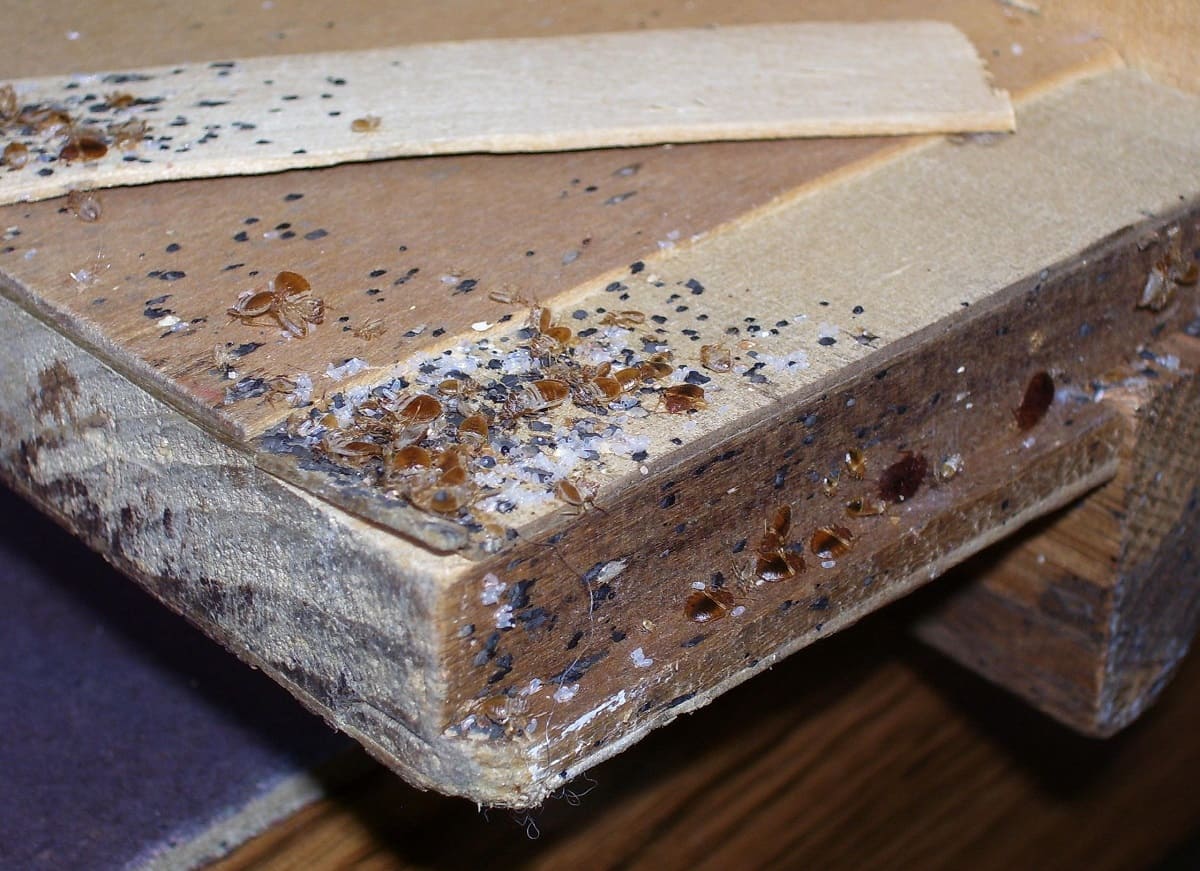
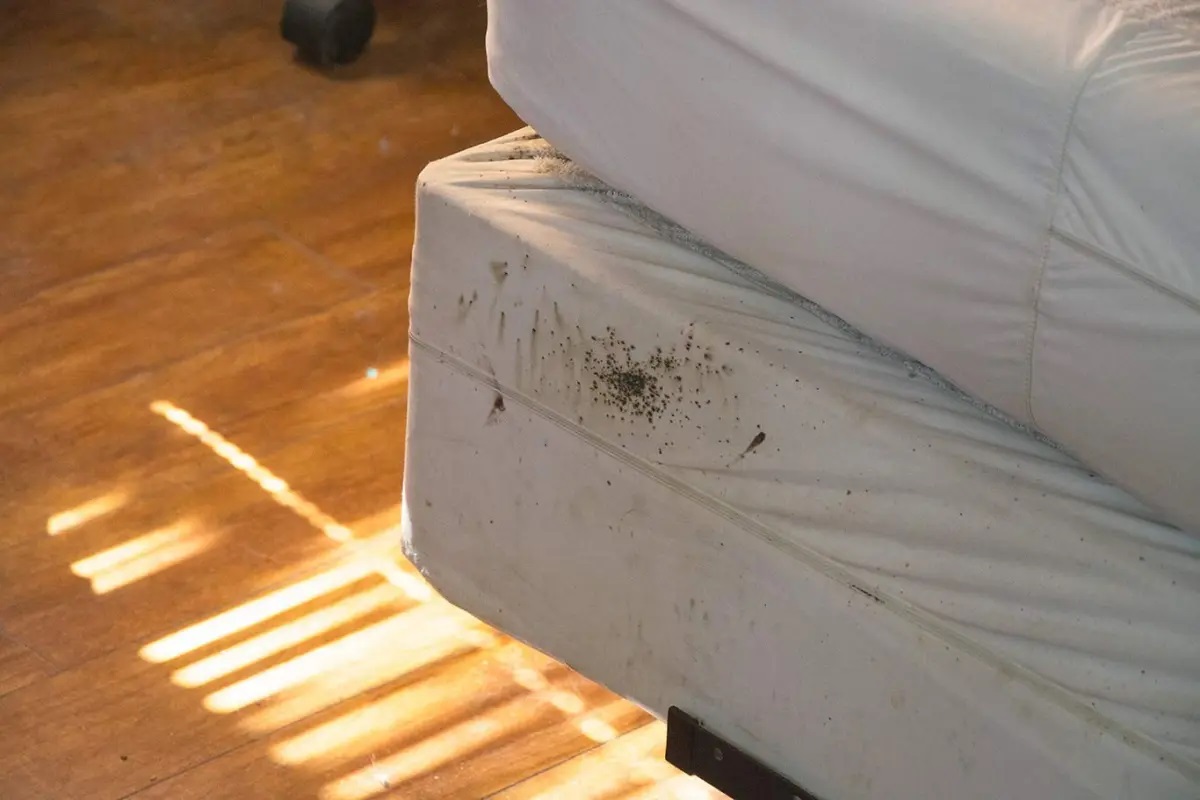
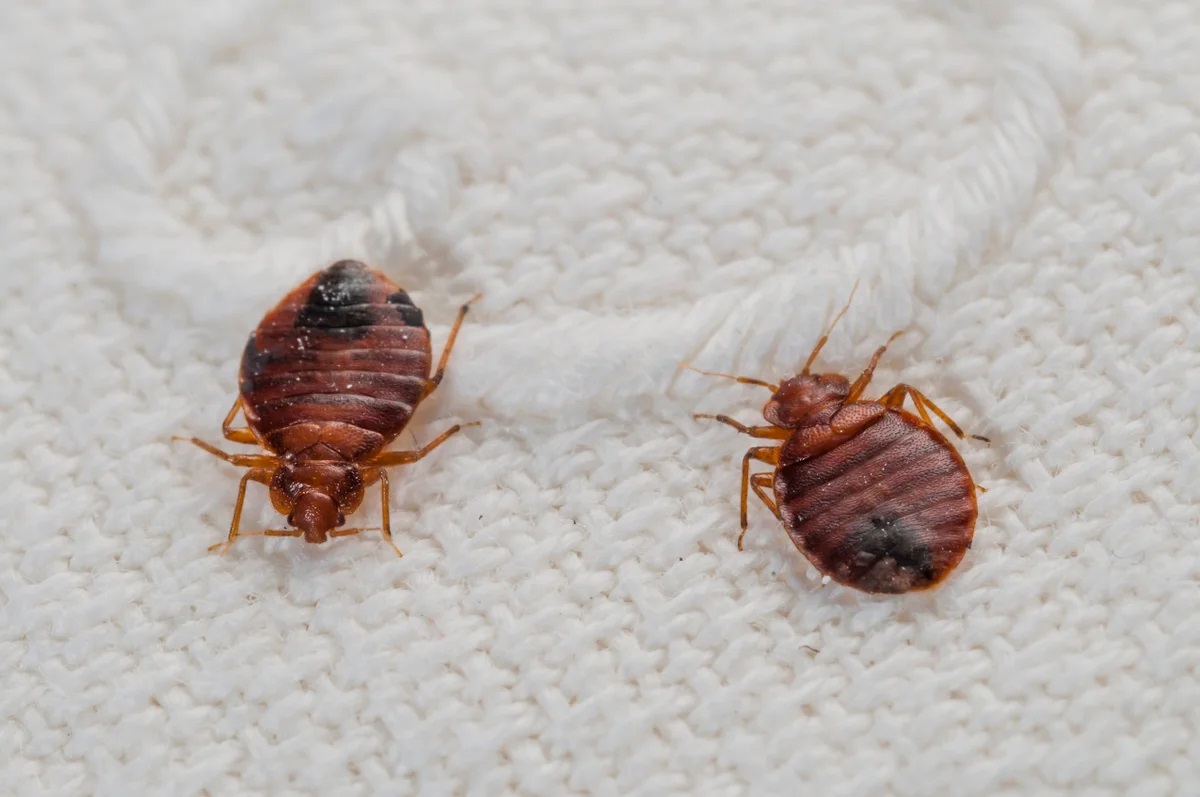
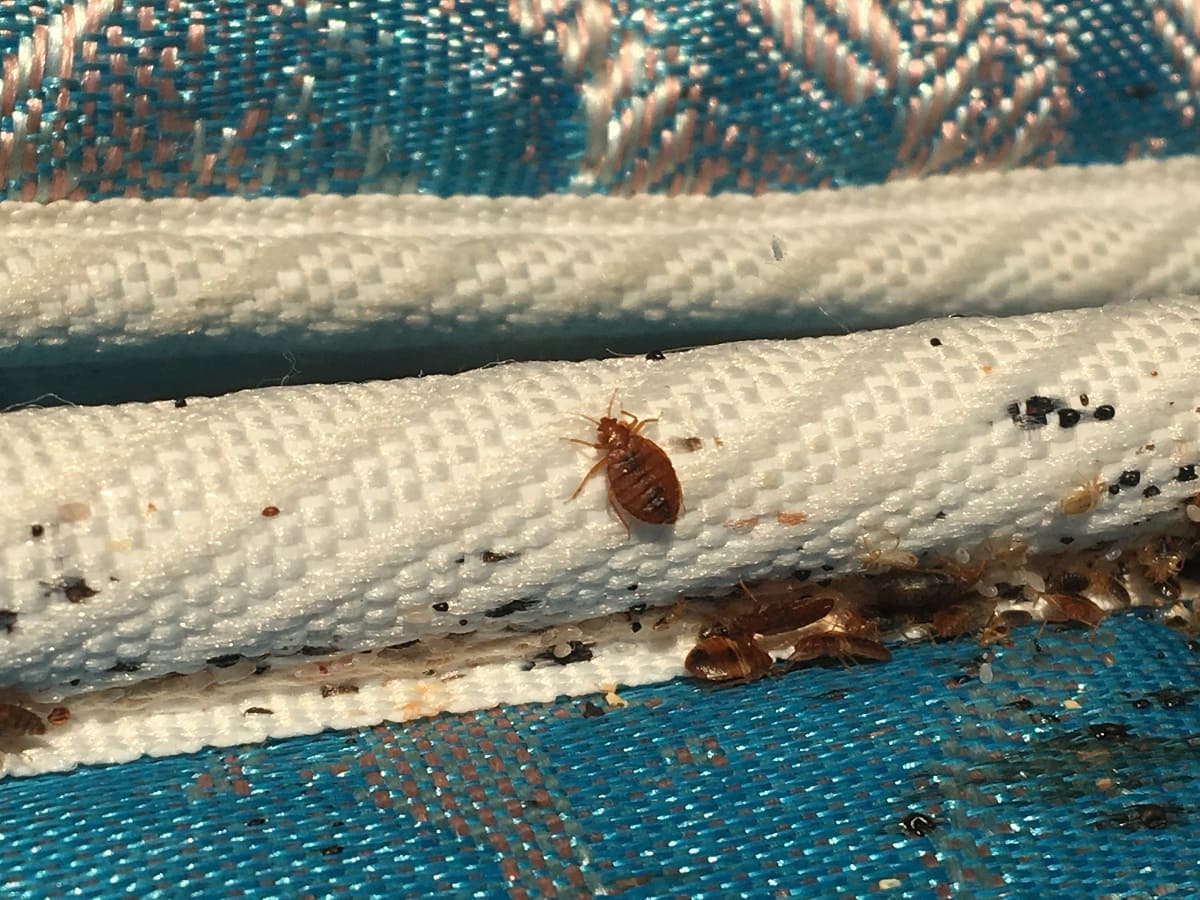
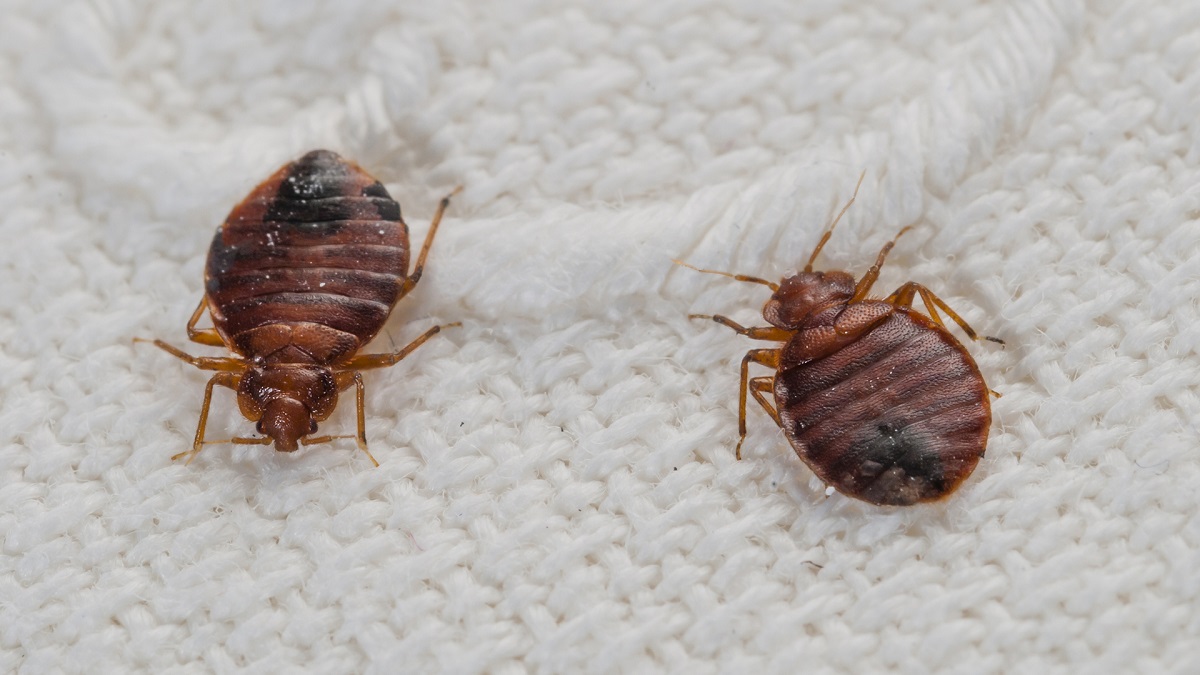
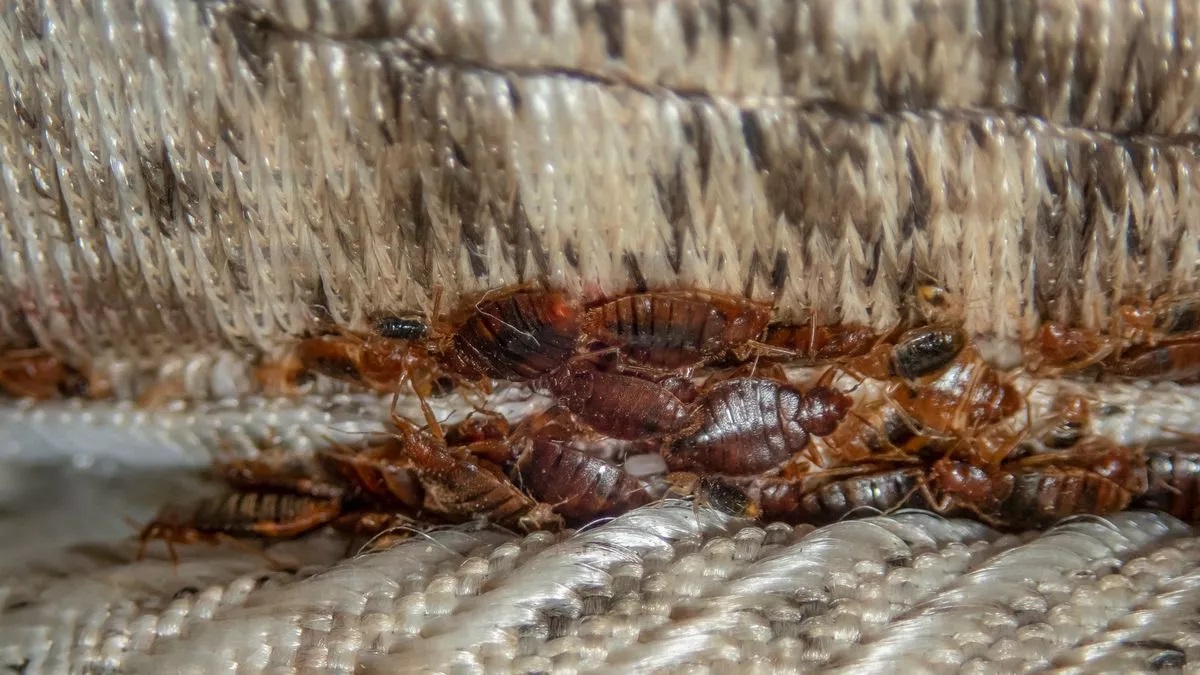
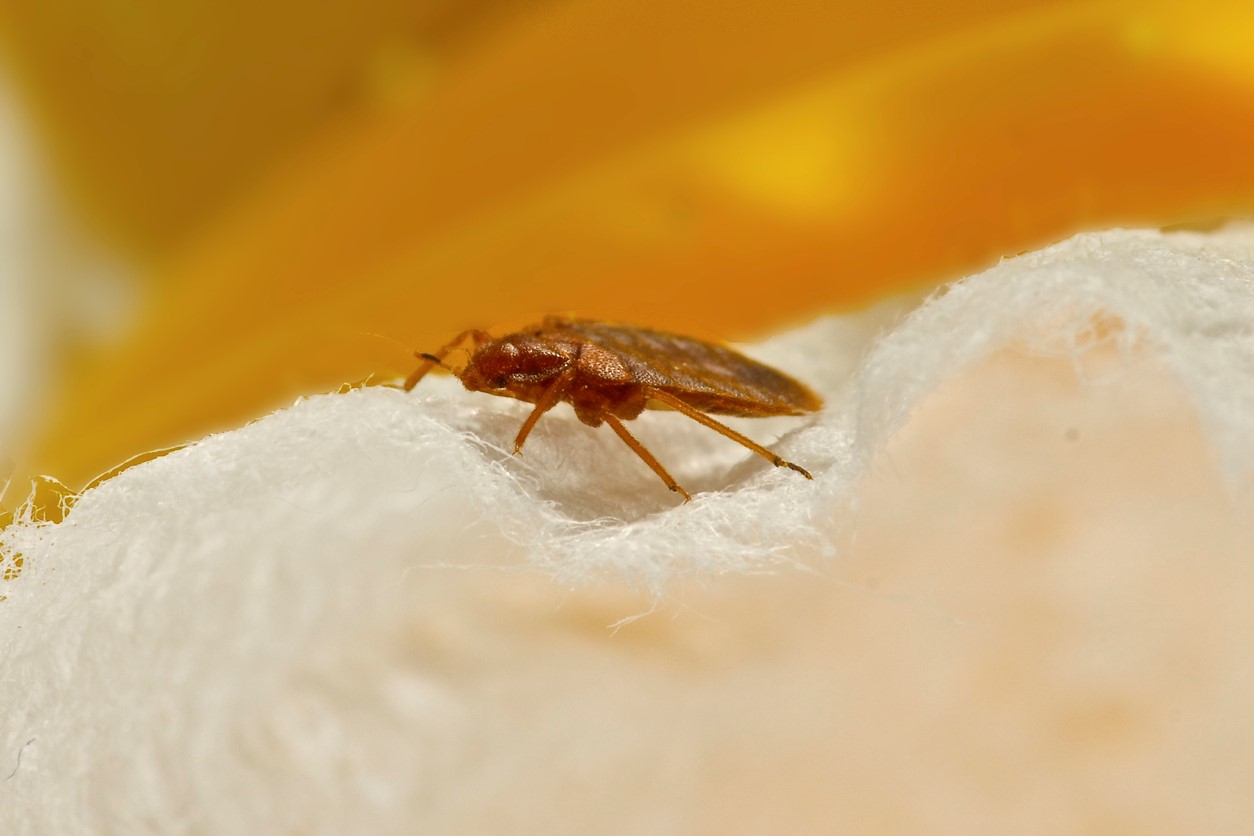
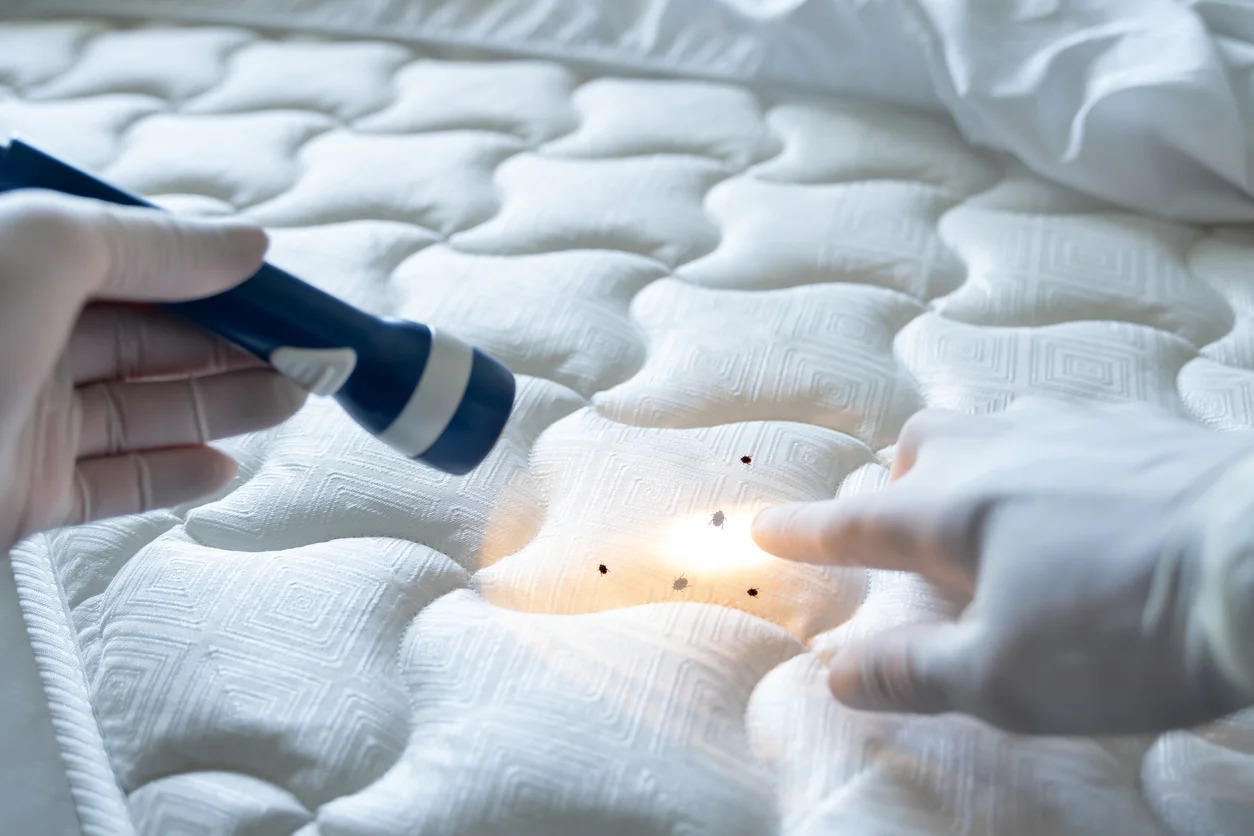
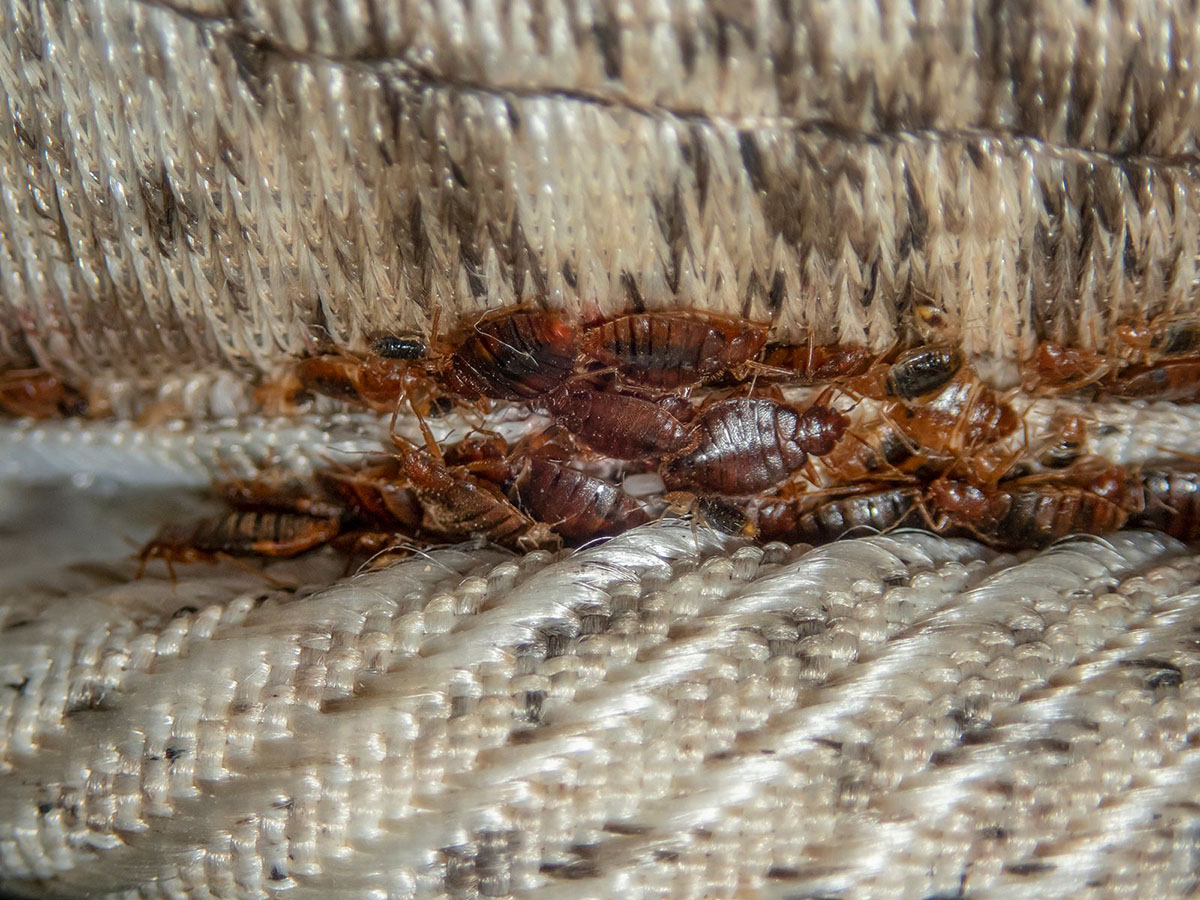
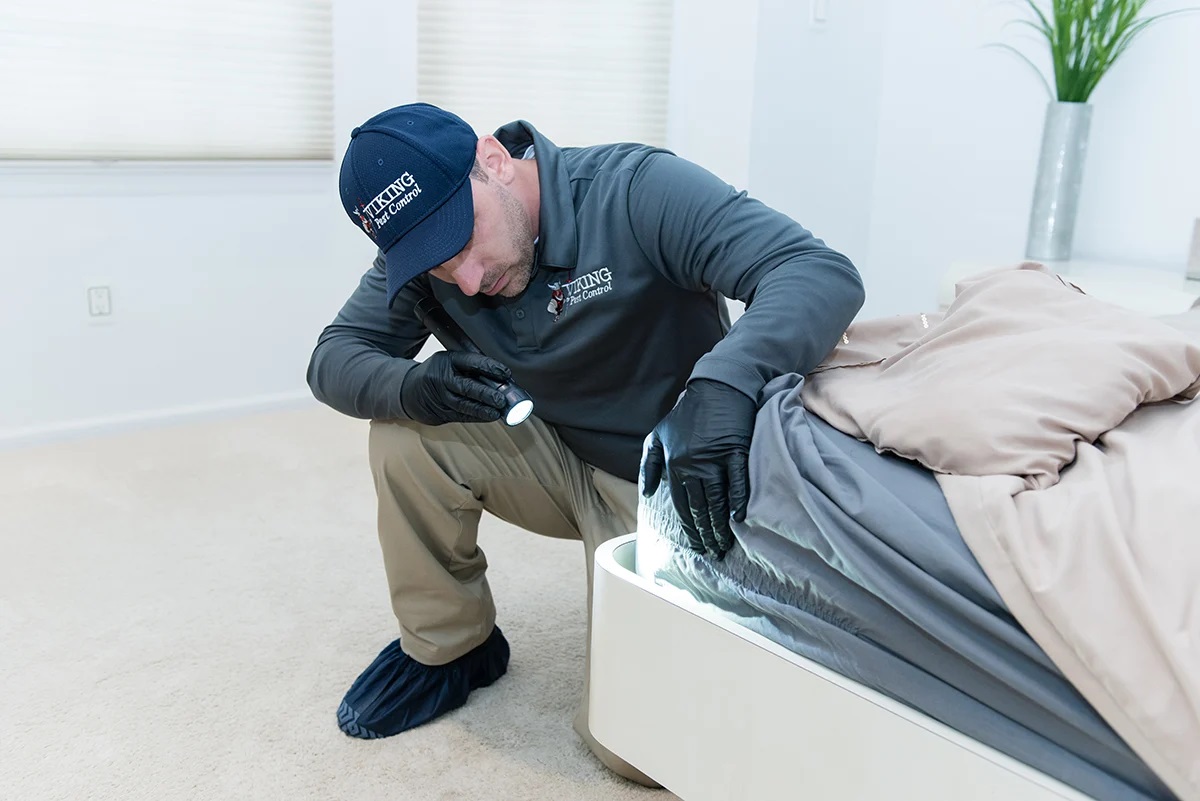
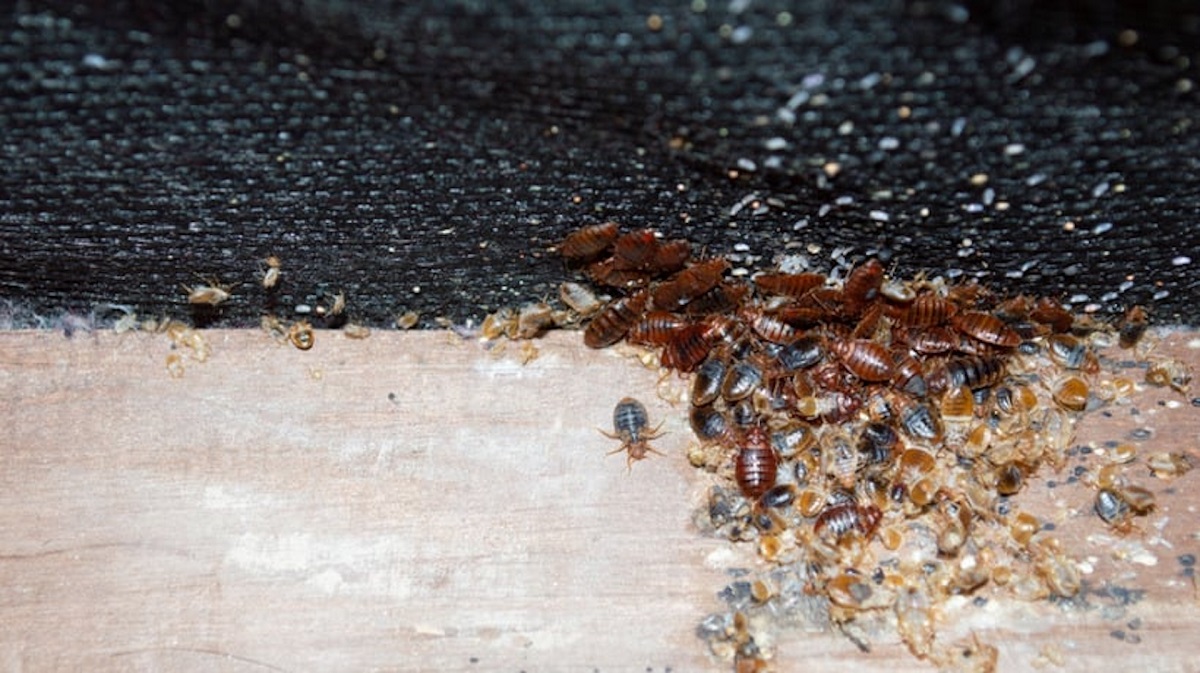

0 thoughts on “How To Check Furniture For Bed Bugs”